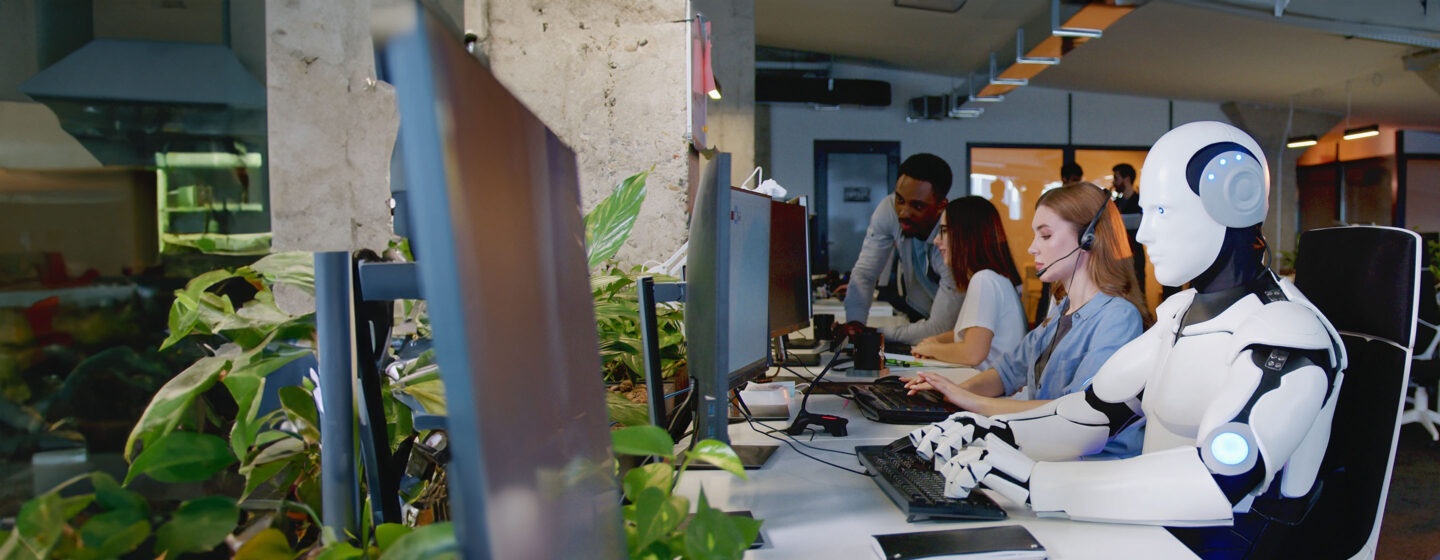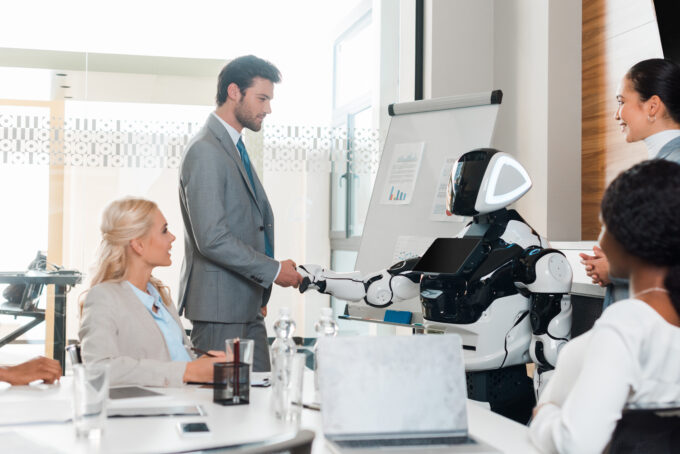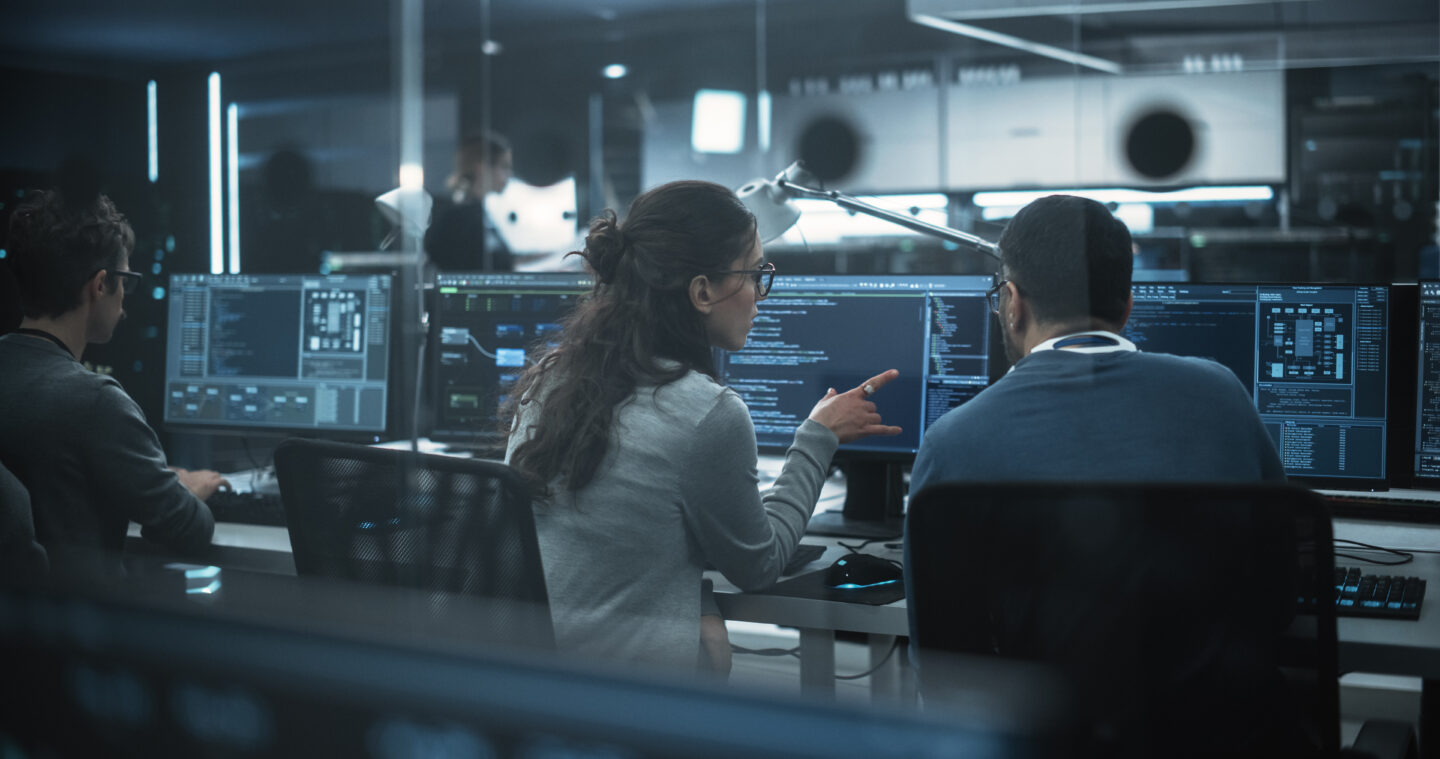
AI maturity in manufacturing: lessons from the most successful firms
AI maturity gives manufacturers an edge by transforming infrastructure, operations, governance, and talent strategies....

by Ginka Toegel Published August 15, 2025 in Artificial Intelligence • 8 min read
Imagine the perfect teammate. They’re never short of ideas and always have answers to even the toughest questions. They’re available 24/7, with boundless energy and total dedication to their work. They’re incredibly quick-thinking and can make sense of complex data in moments. What’s more, they have views about how the team should be run.
The thing is, they’re not human.
As AI grows in sophistication, the prospect of organizations giving it equal status with human team members is becoming increasingly realistic. AI still generally requires direct written prompts, but it may not be long before AI is right at the heart of team operations, taking part in conversations and making unprompted contributions and suggestions.
While this would represent a remarkable technological breakthrough, excitement at the possibilities should not obscure the potential downsides for existing team members.
Human team dynamics can be incredibly complicated, rooted as they are in primal emotional responses – and adding powerful AI systems to the mix will bring a whole new level of complexity. As AI is integrated with human teams, CHROs have a key role to play.
While human-only teams tended to work in silos, AI helped participants bridge the traditional divide between R&D and commercial roles.
Inevitably, organizations will seek to harness the benefits of AI. A recent study into the effects of the “cybernetic teammate” by Fabrizio Dell’Acqua and colleagues, conducted at Procter & Gamble, found that, in a product development scenario, both individuals and teams working with AI performed better than peers working without it.
Strikingly, there was a particular benefit for AI-assisted teams as opposed to individuals. They were more likely to produce work ranked in the top 10% of solutions. One of the key factors was that while human-only teams tended to work in silos, AI helped participants bridge the traditional divide between R&D and commercial roles.
This shift in mindset is where CHROs need to get involved. Dell’Acqua and his co-authors conclude that the way we think about AI is changing fundamentally. Nowadays, it’s considered less a tool and more a colleague. CHROs will need to guide organizations through this mindset change.

“The idea of STARA – Smart Technology, Artificial Intelligence, Robotics and Algorithms – is a useful one. These areas will heavily influence HR’s priorities.”
As technological advances transform AI into a potential teammate, the likely impact on people – and, consequently, organizations – means that CHROs must manage its deployment with care.
CHROs are well-positioned to lead efforts to change workforce perceptions and attitudes toward technology. They might draw on studies showing that people accept AI more readily when it is introduced as a junior analyst, rather than an all-knowing Oracle. They can encourage people to use AI in different roles – as a brainstorming partner, or as a devil’s advocate, rather than a final arbiter of team plans. That approach can ensure team members feel empowered by AI, so they engage with it fully instead of feeling it has been imposed on them in a way that undermines their professional identity.
CHROs can also play a pivotal role in working with colleagues across the business to anticipate requirements for new skills, identify gaps, and lead investment in targeted training to ensure smooth integration of AI. They should be alert to every implication of the implementation of new technology for the workforce. Some have even argued HR might evolve into ‘human-technology resource management’.
This takes CHROs into new terrain. The idea of STARA – Smart Technology, Artificial Intelligence, Robotics and Algorithms – is a useful one. These areas will heavily influence HR’s priorities, so CHROs need a firm grasp of their capabilities.
Yet CHROs must also ensure that their organizations focus on soft skills, which, paradoxically, will be even more important in an AI-powered workplace. Human creativity, empathy, emotional intelligence, and communication are becoming more, not less important. But, crucially, so are critical thinking and ethical reasoning. As AI becomes more powerful, the questions that leaders face will not be “Can we use AI to do this task?”, but “Should we?” Strengthening leaders’ capacity for principled decision-making and moral reasoning will be vitally important.
CHROs need to embody that dual focus. They are ideally placed to lead AI-related change-management initiatives, with an emphasis on calming workplace anxieties. People need transparent communication about AI’s benefits and impacts. Studies such as P&G’s show that people can feel more, not less, engaged through access to AI. But if organizations roll out new technologies carelessly, people will rapidly conclude that AI is coming for their jobs.

Providing reassurance to colleagues and giving them the confidence to work with AI in a team environment will require CHROs to understand the complex effect that AI may have on teams. Three potential impacts stand out.
Team boundaries: A sensible and clear definition of a team’s boundaries is critical to effective collaboration. Will team members willingly include AI as an additional team member, or will they attempt to exclude it? These attitudes will be central to the effectiveness of AI-powered teams.
Emotional impact: Complex interpersonal relationships, competitive as well as collaborative, shape team dynamics. AI will process data and generate insights faster than any human teammate but will miss the unspoken social dynamics that humans naturally pick up on.
How will team members accept their inequality in analytical speed and data recall? Will team members perceive a status threat and respond with resentment or withdrawal behaviors? It falls within the CHRO’s remit to emphasize that AI is there to help in certain areas, doing the legwork while human workers take on more strategic thinking and decision-making.
Conflicts: Teams are also shaped by conflict around tasks, processes, and relationships. How will AI affect this? People might find AI difficult to work with, perceiving an assumption that its “ideas” are superior, or its answers are inherently correct. Will this give rise to counterproductive resistance? Could they even attempt to sabotage the AI’s functioning? Given their influence, CHROs could lead a discussion about how much weight should be given to AI’s contributions. For example, does it get a vote when the team is split on a decision? How leaders handle such moments will have a huge impact on teams.

“On the basis that organizations must maximize AI’s value, it’s plausible to assume that teams will go through phases in their relationship with AI, from (perhaps) uniting against the machine, to gradual acceptance.”
Given the potential disruption of AI integration, CHROs may wish to assess options for managing the impacts.
One is to provide employees with access to AI principally as a personal tool. That could offer them a stronger sense of control, sidestepping issues around team boundaries, emotional responses, and conflicts. Another would be to set up AI team members as passive listeners who participate only when asked. But that would naturally place some limitations on their usefulness. Either of these approaches would constrain AI from adding maximum value.
On the basis that organizations must maximize AI’s value, it’s plausible to assume that teams will go through phases in their relationship with AI, from (perhaps) uniting against the machine, to gradual acceptance. Empirical research is required to test this, but it is a logical model that CHROs could use to help evaluate and manage team dynamics as they evolve.
Teams could also benefit from training AI to read these team dynamics. It can already read human emotions from facial expressions, for example. But it will benefit from a framework that allows it to recognize the warning signs of problems in a team, such as growing tension or emerging conflicts. It could then be a source of management and resolution of conflict, rather than of the conflict itself.
CHROs should adopt and promote an experimental mindset within clear boundaries (including around privacy and bias).
It may be tempting for CHROs to start by developing rules and guidelines. But the reality is that the pace of technological change could make documents obsolete before they are finished, wasting time and resources as new guidelines are immediately required.
Instead, CHROs should adopt and promote an experimental mindset within clear boundaries (including around privacy and bias), while going to every length to reassure colleagues that AI’s prime function is to help human workers, not replace them.
For most teams, in most organizations, AI may not yet seem close to becoming “one of the team.” But it’s closer than it seems. CHROs need to be ready.

Professor of Organizational Behavior and Leadership at IMD
Ginka Toegel is a teacher, facilitator, and researcher in the areas of leadership and human behavior. Specialized in providing one-to-one leadership coaching and team-building workshops to top management teams in both the public and private sector, her major research focuses on leadership development, team dynamics, and coaching. She is also Director of the Strategies for Leadership program and the Mobilizing People program.

August 9, 2025 • by Tomoko Yokoi, Michael R. Wade in Artificial Intelligence
AI maturity gives manufacturers an edge by transforming infrastructure, operations, governance, and talent strategies....

August 8, 2025 • by Tomoko Yokoi, Michael R. Wade in Artificial Intelligence
Mastering artificial intelligence will be key to the future of the automotive sector; firms that fail to do this risk being left behind. IMD’s AI Maturity Index unveils the strategic approaches driving...

July 28, 2025 • by Tomoko Yokoi, Michael R. Wade in Artificial Intelligence
To build trust, companies should be as transparent with their algorithms as they are with their ingredients....

July 25, 2025 • by Konstantinos Trantopoulos , Paolo Aversa in Artificial Intelligence
In Formula 1 racing, every microsecond counts. Konstantinos Trantopoulos and Paolo Aversa explore how teams use Human-AI collaboration to boost performance – and what businesses in other sectors can learn from their...
Explore first person business intelligence from top minds curated for a global executive audience